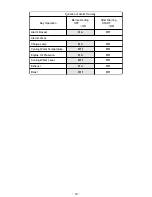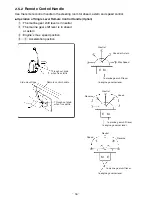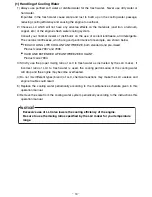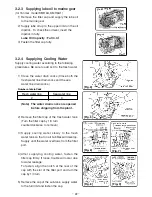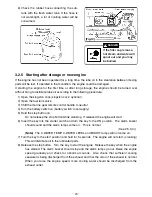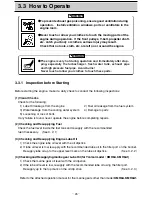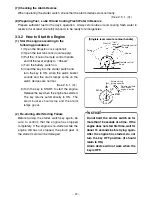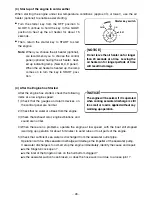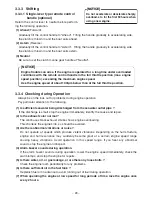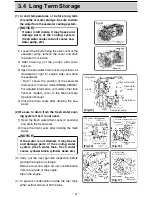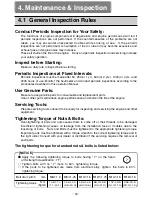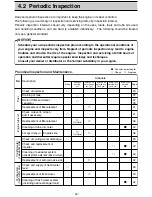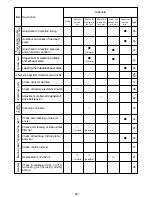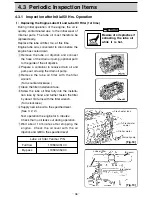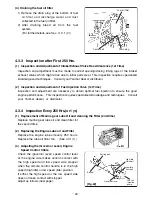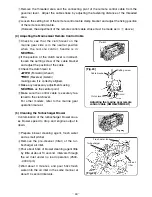
_
25
_
●
To prevent exhaust gas poisoning, ensure good ventilation during
operation. Install ventilation windows, ports or ventilators in the
engine room.
●
Never touch or allow your clothes to touch the moving parts of the
engine during operation. If the front pulleys, V-belt, propeller shaft,
etc. catch your body or clothes, serious injury may result.
Check that no tools, cloth, etc. are left on or around the engine.
●The engine is very hot during operation and immediately after stop-
ping, especially the turbocharger, fresh water tank, exhaust pipe
and high pressure fuel pipe. Avoid burns!
Never touch or allow your clothes to touch these parts.
3.3.1 Inspection before Starting
Before starting the engine, make it a daily check to conduct the following inspections:
(1) Visual Checks
Check for the following:
1) Lube Oil leakage from the engine
2) Fuel oil leakage from the fuel system
3) Water leakage from the cooling water system
4) Damage to parts
5) Loosening or loss of bolts
If any failure is found, never operate the engine before completing repairs.
(2) Checking and Resupplying Fuel
Check the fuel level inside the fuel tank and resupply with the recommended
fuel if necessary. (See 3. 2. 1)
(3) Checking and Resupplying Engine Lube Oil
1)
Check the engine lube oil level with the oil dipstick.
2)
If lube oil level is low, resupply with the recommended lube oil to the filler port on the bonnet.
Resuppiy lube oil up to the upper level mark on the lube oil dipstick.
(See 3. 2. 2)
(4) Checking and Resupplying marine gear Lube Oil (for Yanmar model : KMH6A, KMH6A1)
1)
Check the marine gear oil level with the oil dipstick.
2)
If the lube oil level is low, resupply with the recommended lube oil using the filler port.
Resupply up to the top mark on the oil dip stick.
(See 3. 2. 3)
Refer to the attached operation manual for the marine gears other than model
KMH6A, KMH6A1.
3.3 How to Operate
WARNING
CAUTION





